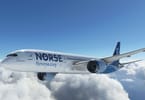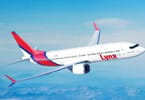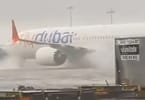In the face of shrinking profit margins, ballooning cost of fuel in the foreseeable future, airlines may be forced to face the reality of flying passengers for free, paying only for fuel and airport charges to stay in business – or go bust.
Recent decisions by carriers to cut flights and retrench pilots are now adding to the daily nervousness in the industry following the grounding of almost a dozen carriers on both sides of the Pacific within the last six months.
In addition to earlier announcements by United Airlines and Qantas to cut routes, ground aircraft and reduce staff, American Airlines has just announced it will soon be retrenching up to 25,000 employees, in addition to grounding “hundreds” of aircraft and cut the number of flights.
According to the Business Travel Coalition, which represents corporate aviation travel, as many as 100 regional and 50 major airports nationwide in the US will lose some, or all of their air service by the end of the year.
If airlines are “forced” to dramatically reduce their operations and close important routes due to high fuel costs, the US and global economies could be hurt, according to travel industry association, the Pacific Asia Travel Association (PATA).
“Airlines are not only the lifeblood of global commerce and industry, but an essential part of society,” said Peter de Jong, CEO of PATA. “We only need to look back five years to recall the catastrophic effects when people stopped flying due to concerns over SARS.”
In a stark reminder of the days the industry is facing ahead, Idris Jala, an oil industry veteran-turned-Malaysia Airlines CEO, warned the industry is “facing a perfect storm” brought on by the surging oil price, a slowing global economy, overcapacity and the rapid growth of budget carriers, which are all “shaving margins to the bone.”
The prognosis for the industry is really bleak, added Idris, whose two carriers have been quoting fares starting from “0” price.
“If adjustments don’t take place quickly the airline industry will collapse and have a ripple effect throughout the entire world economy.”
“Airlines are an engine for global prosperity” added Fernando Pinto, International Air Transport Association (IATA) chairman. “Failure among them would send shock waves throughout the world economy.”
Tourism experts, from hotel operators to travel and tour agents are beginning to count the cost of diminishing business.
According to the Hawaii Visitors and Convention Bureau, higher fuel prices and airline closures may see a drop of as much as 25 percent “air capacity” to the famed holiday destination.
Despite increasing fuel surcharges between 25 – 80 percent on its routes, Malaysia Airlines, a full service carrier has only “partially” covered its fuel costs. “The fuel surcharge helps to recover some of the fuel costs and to match the competition.”
The “good times” will only return after painful reforms, including grounding aircraft, cutting staff and retaining only “essential costs,” according to Idris. Fares may have to go up by as much as half, capacity cut by a quarter, all of which have to be done in the face of customer resistance.
“Drastic changes and willingness to reinvent is vital for the industry’s survival,” Idris said, who sees the future of airlines in “mergers and acquisitions.”
Idris foresees the flying public facing higher ticket fares, or “be prepared to stomach even higher prices later” when there are fewer carriers left and competition fizzles out. “The majority are already flying in the red, if not, some will be forced out of business.”
WHAT TO TAKE AWAY FROM THIS ARTICLE:
- Recent decisions by carriers to cut flights and retrench pilots are now adding to the daily nervousness in the industry following the grounding of almost a dozen carriers on both sides of the Pacific within the last six months.
- According to the Business Travel Coalition, which represents corporate aviation travel, as many as 100 regional and 50 major airports nationwide in the US will lose some, or all of their air service by the end of the year.
- In the face of shrinking profit margins, ballooning cost of fuel in the foreseeable future, airlines may be forced to face the reality of flying passengers for free, paying only for fuel and airport charges to stay in business –.






















